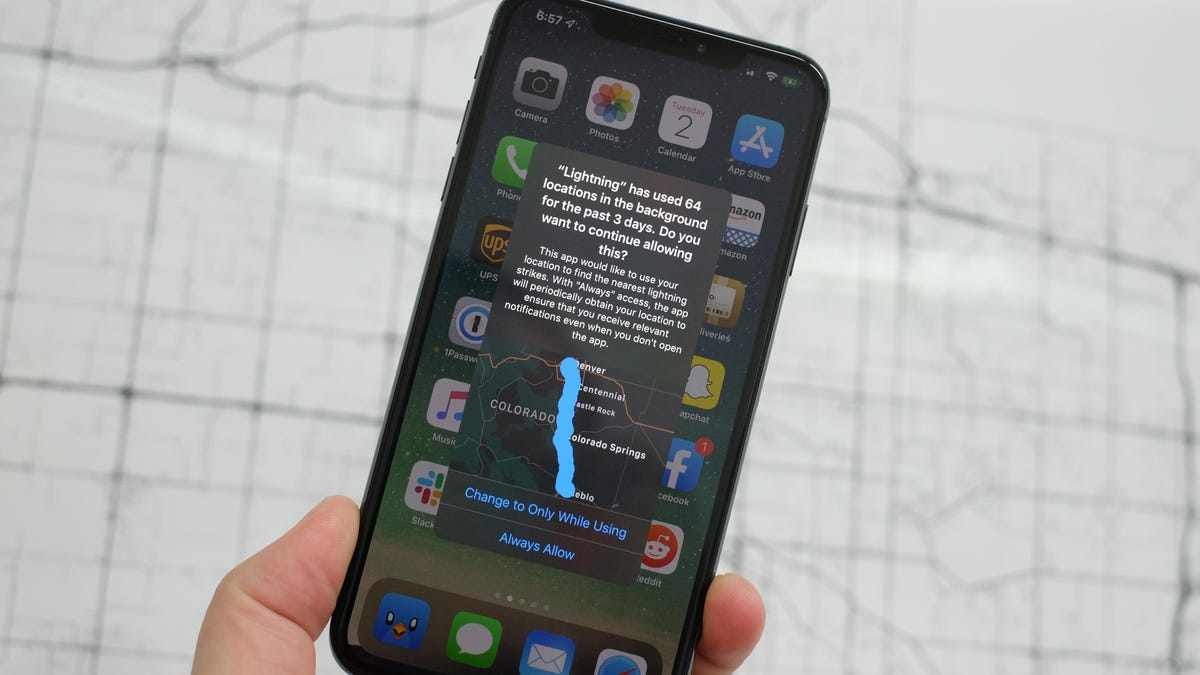iOS 13: Top 5 new security and privacy features for your iPhone
Apple's doubling down on privacy with this latest software update.

iOS 13 and iPadOS have a few new privacy features you should know about.
Over the years, Apple has spent a lot of time and energy driving home the message that Apple cares about your privacy. The company has posted billboard ads about privacy and created a section of its website detailing its privacy practices, and CEO Tim Cook called on Congress to change privacy laws. Now, Apple is adding new privacy features to iOS 13 and iPadOS.
iOS 13 comes preinstalled on the iPhone 11 and iPhone 11 Pro, and is available as a free update for iPhone 6S and newer models.
The new features give you far more control over how often apps can access your location, ways to stop apps from scanning nearby Bluetooth and Wi-Fi networks to guess your location, a new sign-in method for third-party apps and expanded HomeKit security features.
Decide how often apps track your location
With iOS 13, apps are no longer allowed to request constant access to your location the first time you open them. Instead, you can pick from three different options: Allow location access while you're using app, allow once or don't allow it at all.
Picking Allow Once will give the app your location data, but the next time the app wants to access your location, you'll be prompted again.
Location prompts in iOS 13 have new privacy options.
The first time an app tries to access your location while it's running in the background, you'll receive a prompt asking if you want to approve constant access. Alternatively, if you know you want an app to always have access to your whereabouts, go to Settings > Privacy > Location Services and tap the app's name to whitelist it.
Head to that same section of the settings if you change your mind about a permission setting, either to give it location access or to shut it off. It's a good idea to audit this list of apps from time to time.
Apple is also making it more transparent how often an app accesses your location, by giving a periodic alert that includes a map of all the places an app has checked your location in the background and asks if you want to keep the apps' settings how they are. The map is eye-opening, and should get people to take the prompts more seriously instead of just dismissing them.
Stop sneaky Bluetooth-snooping
A location reminder shows you how often, and where, an app is checking your location.
Some apps never request access to your location, but that doesn't stop them from using known nearby Wi-Fi networks or Bluetooth devices to get a good idea of where you're at.
With iOS 13, you'll now receive a prompt that requests access to your iPhone or iPad's Bluetooth functionality the first time you open an app.
The first time I launched Facebook after installing iOS 13, I was immediately asked to grant the app access to Bluetooth. I denied the request, and have yet to see any ill effects.
There will be, of course, apps like Tile, the service that helps keep track of your lost keys or wallet, that use Bluetooth to connect to their trackers -- you'll need to approve that request if you want them to work.
However, after using iOS 13 or iPadOS for a while, I think you'll be surprised at the number of apps that request Bluetooth access that may not actually need it. You can view a list of apps that have requested Bluetooth access in Settings > Privacy > Bluetooth.
Wi-Fi snooping stops, too
Apps will only gain access to Wi-Fi network information on iOS 13 or iPadOS if you give them access to your location, if they're VPN (virtual private network) apps or if they're apps that configure and use a nearby hotspot (such as setting up a smart home accessory that creates its own temporary Wi-Fi network). Outside of those three types, apps can't see which Wi-Fi networks you connect to.
Sign in with Apple
iOS 13 puts you in charge of apps that want to scan for nearby Bluetooth devices.
Apple didn't stop with enhanced location privacy features in iOS 13 and iPadOS. There's a new Sign in with Apple feature you'll begin to see in apps now that iOS is out.
Sign in with Apple is similar to Facebook and Google's sign-in buttons, but with Apple's approach of not tracking and storing user data for selling ads. Apple will even randomly generate an email address for you to use when you sign up and log in to apps.
This spares you from getting spam sent to your own inbox and keeps you from having to create a fake account to protect your privacy and keep unwanted emails away.
HomeKit improvements
Outside of iOS , Apple also announced that its smart home platform HomeKit is gaining support for secure routers and encrypted home security cameras. The new routers will add a firewall layer to your smart home devices, and give you complete control over which devices can communicate with each other.
HomeKit cameras will soon have encrypted video capabilities and iCloud storage. Currently, many smart home video cameras upload unencrypted video to their respective servers for storage and analyzing. With HomeKit Secure Video, all uploaded video will be encrypted and no one will be able to view it.
Of course, iOS 13 isn't solely focused on privacy. There are plenty of new features, such as a way to block unknown callers, a new gesture-based keyboard and a respectable number of hidden iOS 13 and iPadOS features. Learn more in our complete guide to iOS 13 and iPadOS.
Originally published earlier this year. Updated with new information.

